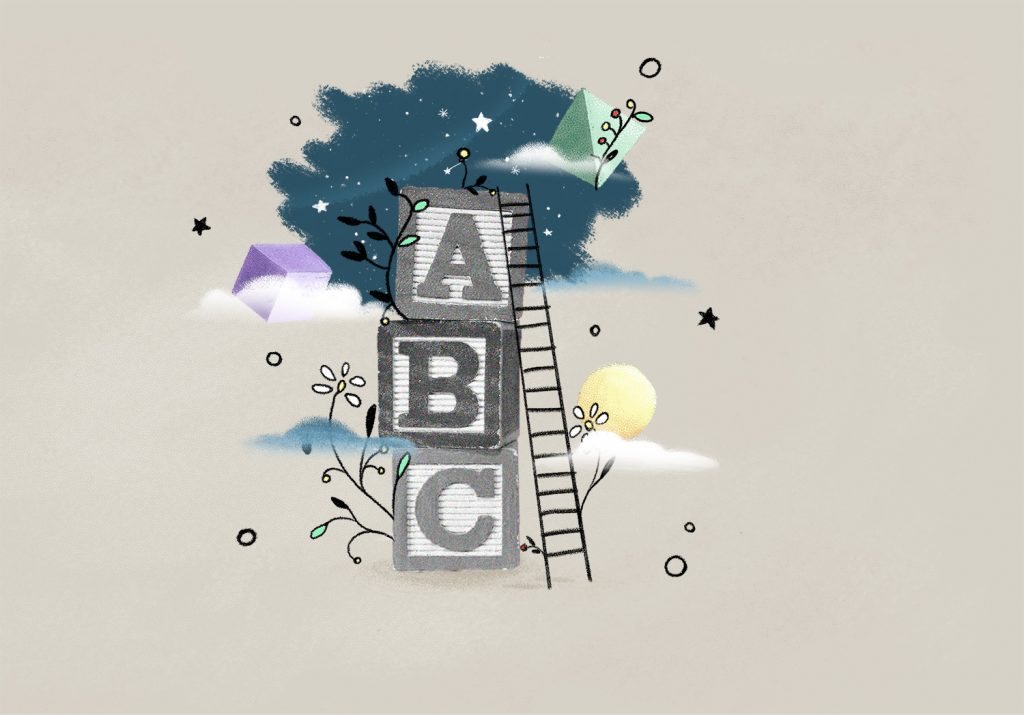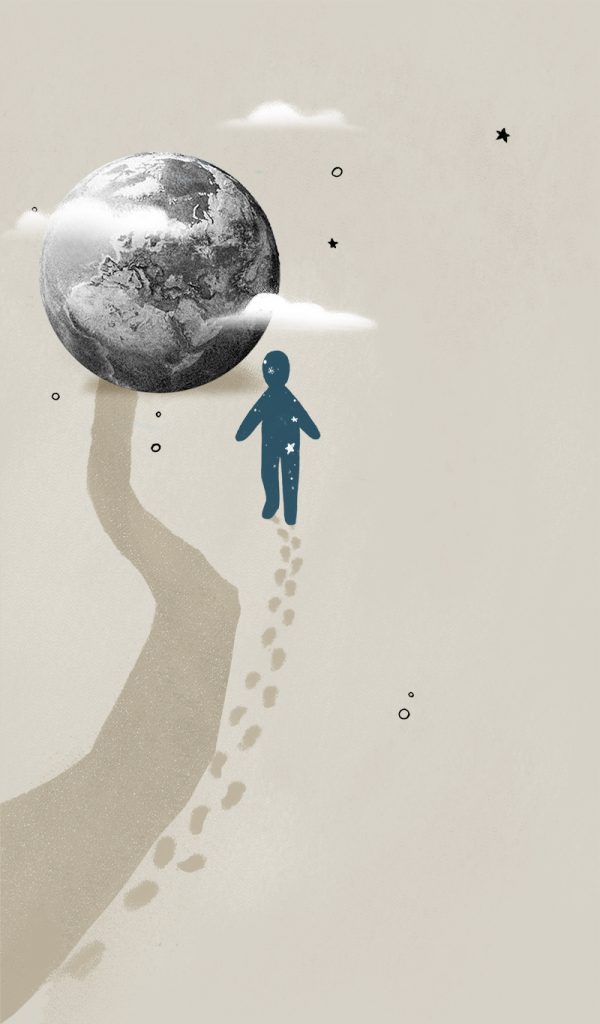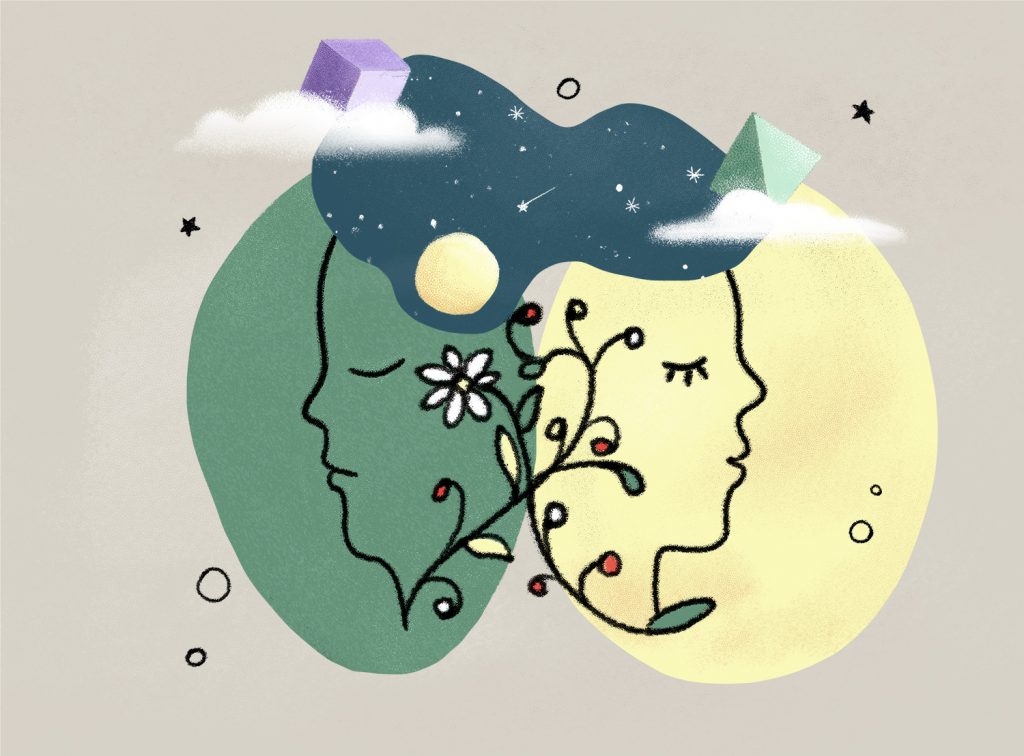Whether you hated school and couldn’t wait to get out of it, or whether you were the maths teacher’s favourite and still remember with emotion the day of your graduation, the school years are not forgotten. School is bittersweet, and it takes too much of your life not to stick with you, for good or bad. In these strange days where kids can’t go to school anymore it’s worth reflecting on whether it’s time to make some changes to the school system, which at times still seems to be predicated on the pre-world wars era rather than on this century (lack of informatization, not enough international languages, lack of subjects such as economics, law, computer programming). Could we discuss a school system less focused on notions and quantity, and more focused on quality and global and digital culture? Maybe the children of the next generation won’t be able to sustain an education that gives you access to only one language, or doesn’t teach you the basics of coding, or where Gaza is. Since we are not experts, we asked people who have been in the school system for a while to tell us their vision of the school of the future. We expected a digital, robotic, mathematical school. And indeed, that vision is there. But we didn’t expect the most important ingredient to have been something else, somehow more ephemeral. We hand over the talking stick to Dr. Camilla Brandao de Souza, sociologist and researcher (Ph.D.), who interviewed the team from Still I Rise, a non-governmental organization for a different school – they tell us what tomorrow’s school will look like.

THE SCHOOL OF TOMORROW
Education is the moment that decides whether we love the world enough to take on the responsibility and thus save it from the ruin that is inevitable without renewal, without the arrival of youth.”
– Hannah Arendt
Reflections and interview by Camilla Brandao De Souza
Nicolò Govoni, born in 1993, is a writer, journalist and human rights activist from Cremona, Italy. At 25, he founded Still I RISE, an international organization that opens schools for refugee children around the world. In 2020 he was nominated for the Nobel Peace Prize. Michele Senici, born in 1993, is the Educational Director of Still I RISE and a former educator.
Camilla: Nicolò, how did it all start?
Nicolò: I started as a volunteer, 7 years ago. I had been struggling with traditional schooling and I felt I wanted to make a contribution to change the way school was set up. I didn’t want any student to feel penalized or denigrated, like I felt. In India, through volunteering, I felt useful. Doing something that benefited others made me feel alive. However, I felt that I didn’t have the skills to be able to at best do what I wanted to do, so I said to myself, “The more I can formalize and equip myself, the more I can follow this sense of usefulness.” And so it all came together. Looking back I recognize that it has been a journey.
Today’s school is already yesterday’s school.”
Camilla: How do you see school today?
Nicolò: In my opinion, today’s school is already yesterday’s school. The school model we have in Italy doesn’t put students at the center, digital innovation is scarce and the selection of teachers is mainly based on disciplinary knowledge. So we wanted to create something that could cope with the inadequacy of the system. We wanted to create an alternative.
The World Economic Forum identified complex problem solving, critical thinking and creativity as the top three skills needed for the immediate future.”
Camilla’s Reflection: Creativity is no longer linked only to the “artistic” sector: in fact, according to a report by the World Economic Forum, it has risen from tenth (in 2015) to third place (in 2018) in the ranking of the most important skills to be able to find a job. Fonte:World Specifically, the World Economic Forum identified complex problem solving, critical thinking and creativity as the top three skills needed for the immediate future. In turn, complex problem solving and critical thinking require imagination, innovation and the ability to perceive multiple perspectives. According to Andreas Schleicher Fonte:Schleicher, Director of Education and Skills at the OECD, in the future we will not be “rewarded” for what we know, but for how we can extrapolate what we know and creatively apply it to new and different problems. According to the World Economic Forum, 65% of children in elementary school today will not find a job: they will invent one, creating jobs that do not exist. Schools, therefore, must foster the ability to create and to break out of the known paths. The industrial era taught students how to remember what was transmitted to them, the era of artificial intelligence will have to teach them how to combine emotional and cognitive skills with artificial intelligence. In the future, we will in fact be assisted by artificial intelligences and it is therefore necessary to find a meeting point between notion (a training tool) and other elements such as understanding and managing emotions.
65% of children in elementary school today will not find a job: they will invent one, creating jobs that do not exist.”
Camilla: What are the differences between your educational model and the traditional one?
Michele: Our school model is based on four cornerstones. The first one is the student-center model, which means that the pupil is at the center of the educational system. In practical terms, in our schools students choose the courses and activities to follow, and not the other way around. Students also determine their own learning objectives and we provide them with self-assessment strategies. This is because we want to increase self-accountability and self-awareness. We promote the creation and development of personal research projects to teach them how to use and implement a critical spirit, as well as project management. We also foster creativity through various tasks and group work, emphasizing their talents and creating the ground for innovation to be generated.
Education and its context should be on the same pace, because the environment educates as much as the educator.”
The second is environment. Education and its context should be on the same pace, because the environment educates as much as the educator. Our schools are born with the idea of a “common hall”, that is, a common space placed at the core of the school. That’s where students talk, get tired, or meet. The third is the teacher, which for us is a mentor and not just a person who delivers contents. In our schools we do not offer extra hours of mentoring in the sense that what we ask of our teachers is to be mentors all the time. In fact, we believe that mentoring, guidance, and educational support can and indeed should happen at all times. The final pivot in our approach has to do with a global mindset. Schools should lead their pupils into the world as much as possible. It is necessary for students to know what is happening on the other side of the world.
Schools should lead their pupils into the world as much as possible. It is necessary for students to know what is happening on the other side of the world.”
Camilla’s Reflection: A 2019 study Fonte:Brandao based on 339 children ages 8-11 and 18 primary school teachers investigated the relationship between teachers’ emotional intelligence (i.e., the ability to recognize, understand, define, express, and manage emotions Fonte:Salovey) and their students’ creativity. In this study, it was observed that children’s level of creativity depended on the emotional intelligence of their teachers and the perceived climate within their classroom. This type of data can be very useful, especially given the high degree of importance that these types of variables are gaining in the 21st century. Consequently, it is essential that schools and workplaces use their resources to foster emotional intelligence and creativity, activating paths and strategies aimed at increasing them. Fonte:Plucker
It is essential that schools and workplaces use their resources to foster emotional intelligence and creativity, activating paths and strategies aimed at increasing them.”
Camilla: Nicolò, what is the role of teachers for you?
Nicolò: Teachers are mentors. I think one of the biggest issues related to traditional schools is that teachers sometimes seem to fear the students. They do their lessons and then they lock themselves in the teacher’s lounge. They should be a guide for the student and not just someone who teaches them how to solve equations.
The future of education will likely see a radical change in the role of teachers, who will be able to work with each student in a personalized manner.”
Camilla’s Reflection: The future of education will likely see a radical change in the role of teachers, who will be able to work with each student in a personalized manner. This approach, combined with the technology available will, little by little, transform teachers into co-creators and designers of innovative learning environments. Such a learning environment will not only teach contents, but will also record how we learn and what types of tasks we are interested in, or find difficult, or boring. New virtual labs will give the opportunity to learn from the experiments themselves and will become integral parts of interactive courses. Building a global mindset will become increasingly part of school curricula. For the first time, in fact, in 2018, the OECD also included within its PISA survey this type of competence, monitoring the preparedness of students to live in a multicultural society and identifying ways to work towards global education. According to this framework, students with global competence are able to:
- explore the world, going beyond what is known;
- recognize different perspectives, even from their own;
- communicate their ideas effectively in front of different types of audiences;
- act to improve conditions, seeing themselves as agents of change.

Camilla: Which challenge do you foresee for the school for the future?
Michele: The biggest challenge to me is forming a global mindset. Let’s make an example, let’s take from the Geography and History program: a program updated to the future must favor the centrality of the world, rather than an area or a historical period related to a specific geographical area.
We need to dismantle the paradigm of curricula and school years. They are an essential part of education, but cannot be the end of it.”
Camilla: Do you think that being able to speak more than one language fluently will become a necessity?
Michele: We invest a lot in teaching languages such as English, Arabic, Swahili, Chinese, in order to provide not only a communication tool, but also an instrument of thought that can lead students to open new doors and dimensions. We need to dismantle the paradigm of curricula and school years. They are an essential part of education, but cannot be the end of it. We need to become people who are more able to collaborate, people who are more able to listen and empathize, and school has an important role in all this.

Camilla’s Reflection: Empathy is the ability to sync with others, understand their feelings and moods. Etymologically, the term derives from the Greek εμπαθεία (empatéia, a word composed of en-, “within”, and pathos, “suffering” or “feeling”). According to Jeremy Rifkin Fonte:Rifkin, American economist and sociologist, empathy is the tool through which we create our social life and we advance as society. Seen in this key, empathy is therefore the foundation of human relations. In this sense, the discovery of the so-called mirror neurons represent the neurobiological confirmation of psychological theories according to which humans are formed in and through relationships, and are biologically programmed to be empathic. A few years ago, a group of researchers at the University of Michigan led by Professor William Chopik conducted a study published in the Journal of Psychology Cross-Cultural Fonte:Chopik that examined, through a series of targeted questions, the levels of empathy of more than 100 thousand people, in 63 countries around the world. The research was conducted based on a number of statements, such as “I care about people less fortunate than me” or “I often try to understand my friends by imagining how things might be perceived from their perspective” to which respondents had to score on a scale of 1-5. This study noted how empathy could vary across cultures and how this variation could be related to psychological characteristics and social behaviors.
Empathy is the tool through which we create our social life and we advance as society.”
Data from this research showed that countries that reveal greater empathy also reveal a higher level of sense of community, conscientiousness, self-esteem, and psychological well-being. Empathy also appears to be directly correlated with happiness. A United Nations survey, the “Happiness Report”, has been ranking the happiness of 155 countries around the world since 2012. Fonte:World This report has placed Denmark among the top three happiest countries in the world for 7 years, a country where the study of empathy has been mandatory since 1993. In Denmark, in fact, one hour a week is dedicated to “Klassens tid,” or a class in which students learn to help their peers, discuss their personal problems, and compete only with themselves. The empathy hour is just as important as the time spent on English or math. During this hour, students discuss their problems (whether they relate to school or to other life outside school) together with their teacher.